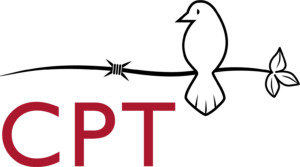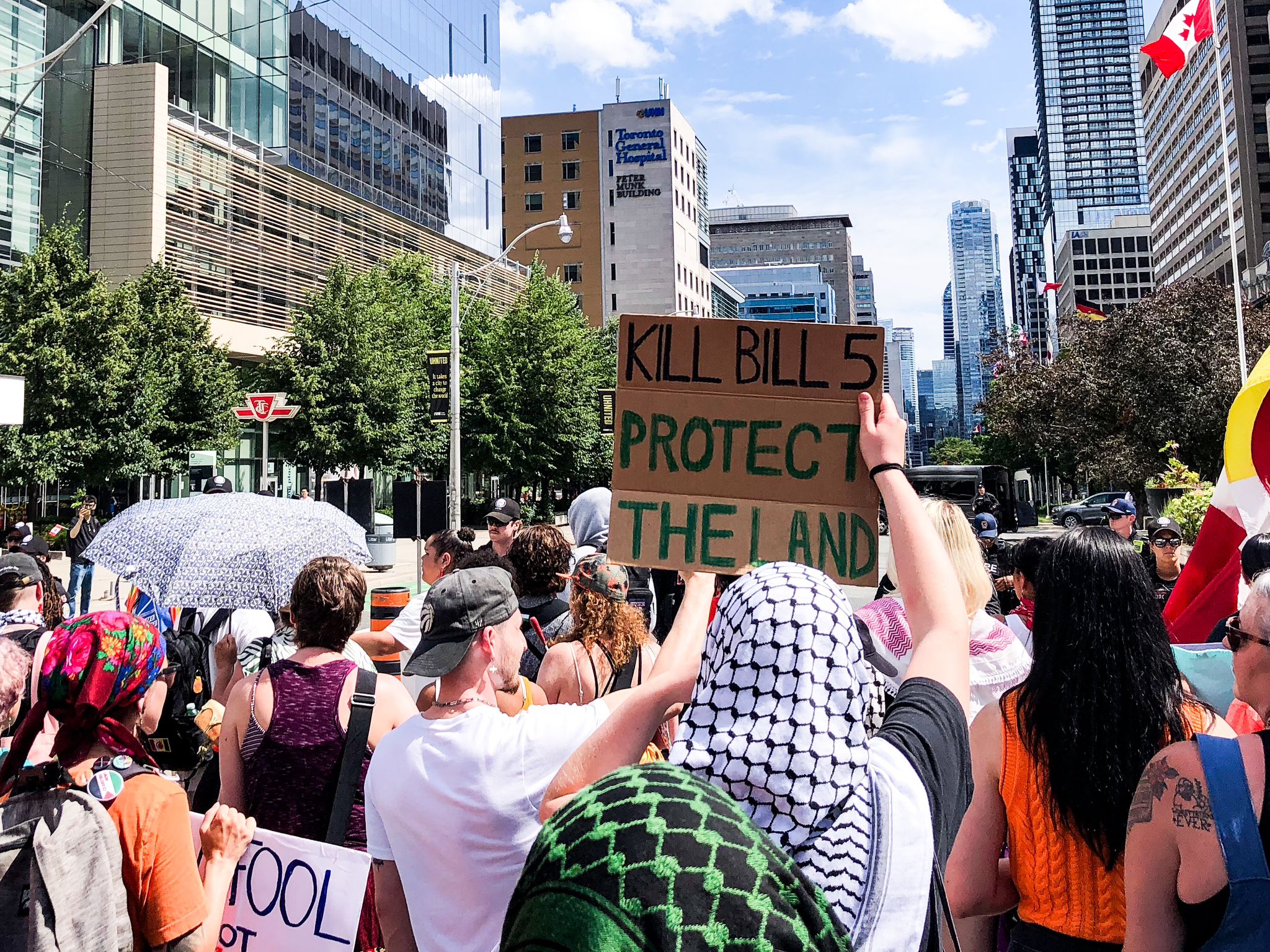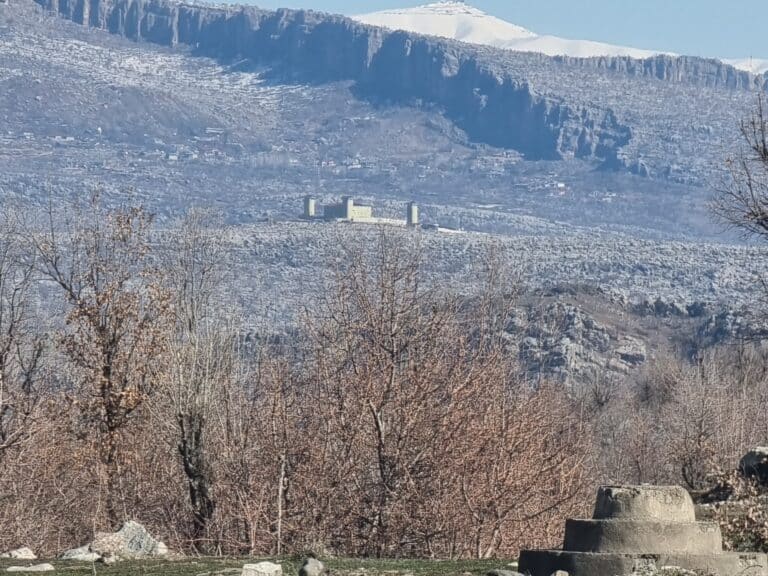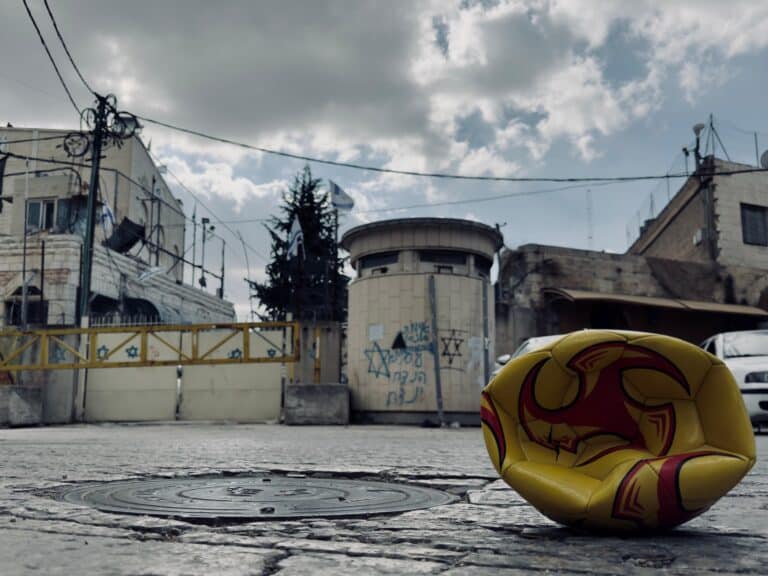On 1 July, on the south lawn of the provincial legislature of Ontario, a celebration of Canada Day was held with carnival rides, food kiosks, and music performances. Many people, however, had no interest in celebrating over 160 years of colonization. On the north side of Queen’s Park, a crowd gathered to draw attention both to the colonial and violent history of Canada and to the colonial present, vividly revealed in the provincial government’s recent passing of Bill 5.
What is Bill 5?
Bill 5, also called the Protecting Ontario by Unleashing Our Economy Act, allows the provincial government to designate “special economic zones” in which it can exempt companies or projects from complying with provincial or municipal laws and regulations. There are no stated limits on this power: the government could use this provision to exempt companies from any requirements for environmental protections, consultation with Indigenous communities, and labour regulations. Government ministers have openly discussed applying this designation to the “Ring of Fire,” a region in northern Ontario with extensive mineral deposits.
Bill 5 is an example of Canada’s continuation of settler colonialism that seeks to dismantle Indigenous land rights while also subjecting Indigenous communities to environmental harms that threaten their health, their livelihoods, and even their lives.
Canada’s federal and provincial governments claim there is an urgent need to accelerate economic development to reduce Canada’s vulnerability to threatened US tariffs. They are expediting policies and legislation that undermine Indigenous sovereignty and that will harm Indigenous communities. As many Indigenous advocates have said for years, the Canadian government’s commitment to reconciliation has been shown as hollow rhetoric. The previous federal government, for example, committed to end boil water advisories in Indigenous communities; 37 communities (26 in Ontario alone) still do not have access to clean water. The provincial government of Ontario is now petitioning against legislating a right to clean water as it could slow down “economic development.”
Over 1000 march to Kill Bill 5
As people gathered to “celebrate” Canada Day, chants of “Kill Bill 5” echoed across Queen’s Park. Over a thousand people marched to condemn the bill and to assert that there is nothing to celebrate on Canada Day. Under the direction of Indigenous leadership, the march proclaimed that the public is against the bill and is willing to fight back against oppressive policies.
As the march approached the southern tip of Queen’s Park, riot police lined up, forbidding the crowd to march south on University Avenue. This has become a frequent tactic over the past two years; Toronto Police increasingly try to stop marches, or permit marches only on specific designated roads. The police attempt to assert dominance over protesters by spatially controlling them, often without any clear or consistent reason for banning a particular route. It is particularly egregious when police ban Indigenous people from marching on their own land. The crowd faced off with the police and demanded that they be allowed to march. In response, the Toronto Police attacked the crowd, arresting and beating three people.
Commitment to resistance
To tell the story of the protest only by describing the 30 minutes of police violence would fail to convey its overall impact. Police are violent and police in Canada were founded to remove Indigenous people from their land and advance settler colonialism – a practice that continues today. While we condemn their violence on 1 July and the subsequent arrests, we also celebrate the continued resistance and determination of Indigenous leaders protesting Bill 5.
Following the arrests, the march continued throughout downtown Toronto. Chants, speakers, and Indigenous ceremony paused traffic at intersections, not only creating a disruption but also providing a moment of education for passers by about the harms of Bill 5. On 1 July, for more than three hours, people rallied and marched, despite the constant threat from police. The message was clear: Indigenous communities and their allies will not be silent against Bill 5. We are ready and committed to resist together.
Learn more: “Protecting our lands: a First Nations response to Bill 5”






